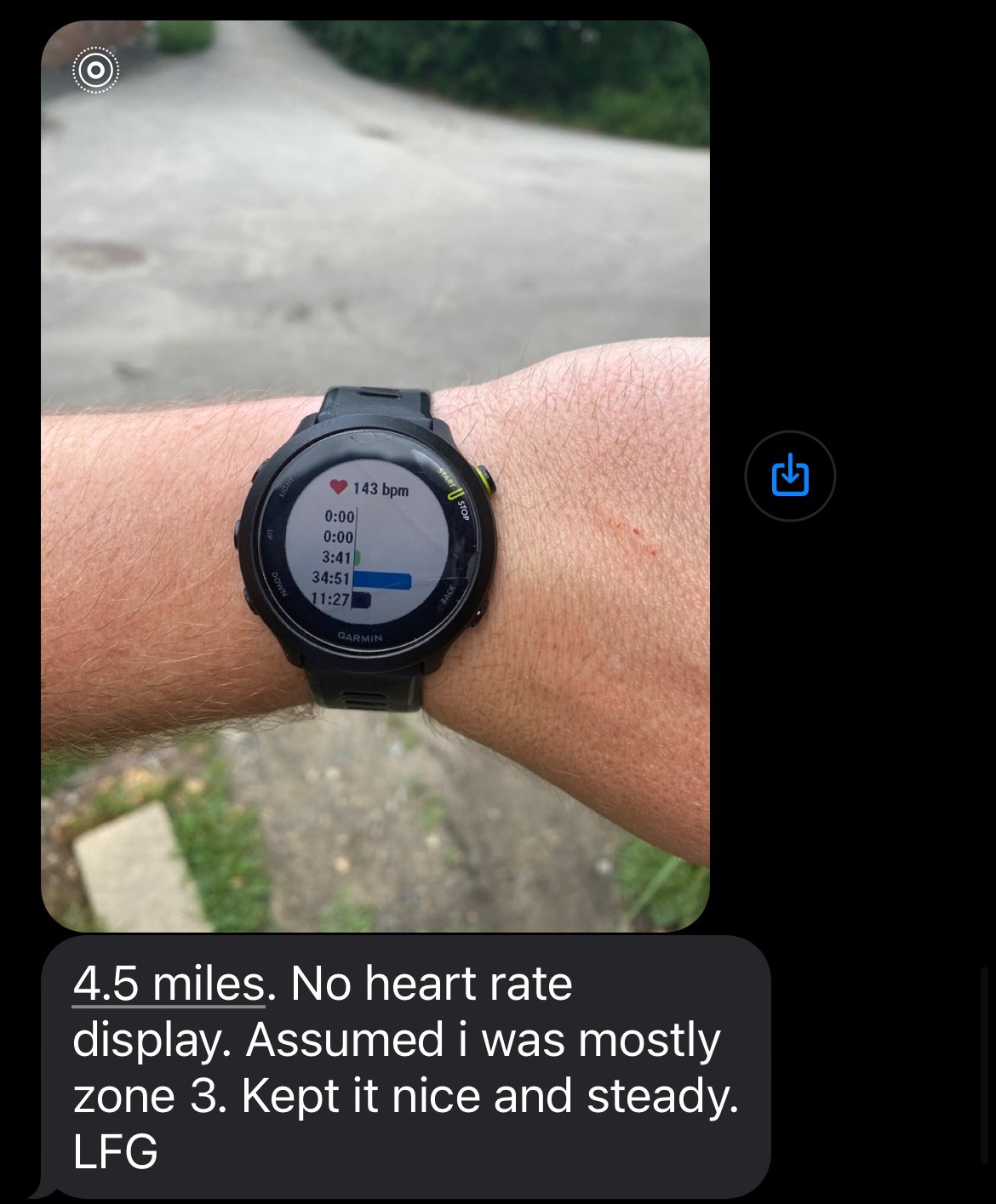retroactive heart rate
I wear my heart rate monitor (chest strap) for 75% of my runs, depending on the time of year and what I’m training for.
When I got to the track, I have typically have it on display along with lap time and current pace. I want to be able to correlate certain heart rates with how I feel, so it’s important to keep a close eye on it. For example, I feel like I could keep holding this pace at 165 beats per minute (bpm), but 171 bpm was unsustainable, I couldn’t breathe and want to go hide in the shade.
When heading out for a road run it’s usually an easy 30 min jog through the neighborhood early in the morning. Then I’m not wearing it or gathering information from it. If I’m doing intervals and trying to be fast, I’ll wear it.
That leaves us with easy effort trail runs, which make up 85-90% of my running. I typically wear the chest strap for these runs, but do not glance at it while running. Rather I wear it to collect the data and look at it afterwards. This is the point I want to make today.
If you’re trying to log some time in zone 2, and are having difficultly flirting with the line of your top end Z2 and Z3 - stop looking at it while running!
Frequent glances are helpful when first starting out to keep your effort in check, but once you’ve built a base, the whole point of zone 2 running is to eventually get faster. When this starts to happen, it can be hard to trust your perceived effort without feeling like you’ll blow up, or that your bpm will get out of control.
In these cases, I recommend not looking at your heart rate data till after your run rather than letting it guide your run. Coach Taylor did this recently and was surprised to find that he was in zone 2 for most of his run, but he felt like it was going to be a run above that HR. When this starts to happen, it’s a good sign. It means your base is expanding and you’re getting fitter and faster.
When looking at the data after your run, note when it came out of the range you’re aim to stay within, any big spikes, how quickly it recovers from spikes and what you exertion level was like.
Justin Miner
@justinminergain

